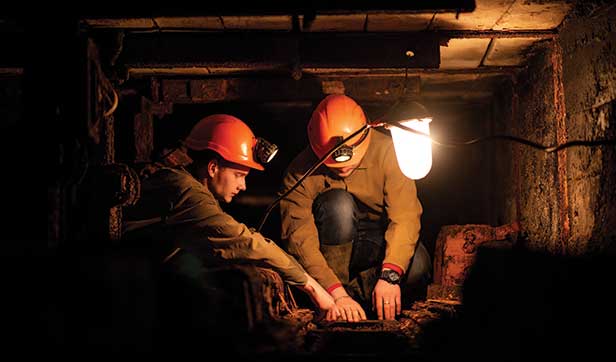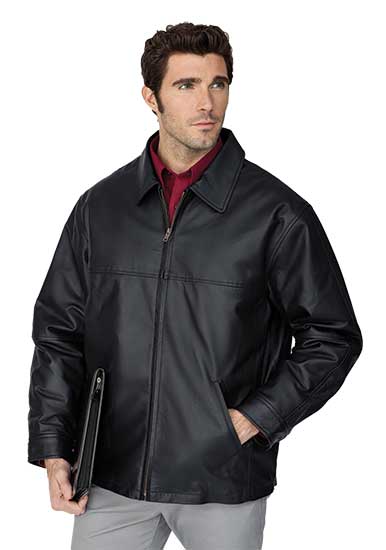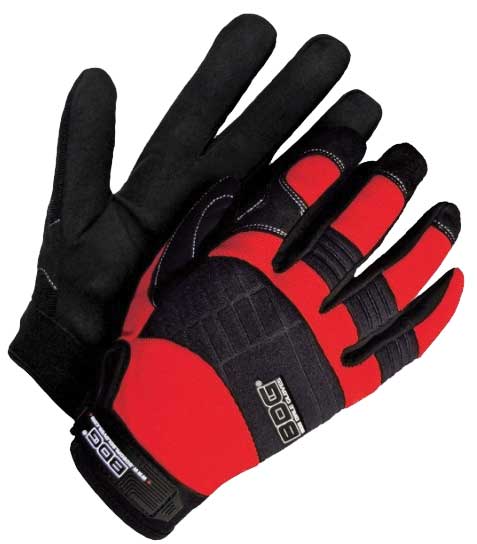December 27, 2019
Promo Market Spotlight: Mining
Unearth sales with this overlooked-but-robust industry.
When the ball drops and a new year dawns, a feeling of hope and optimism tends to overshadow the concerns of the prior year, and that’s no different for the mining industry and those who sell to it. “Our outlook for 2020 is extremely good,” says distributor Brett Edmunds, owner of Integrity 1 Business Branding Solutions (asi/231911) in Reno, NV.

Although Nevada is the top mining state in the country and the source of nearly two dozen minerals critical to daily life (think salt, copper, lithium and petroleum), this had been, until recently, an untouched sector for Edmunds, whose main focus has been construction. “Mining is a growing industry and it’s so much vaster than I ever knew,” he says. “And I’m a native Nevadan!”
Mining may not be the glamorous focus of Wall Street or Madison Ave., but it’s a bedrock industry that produced nearly $624 billion in gross output in 2018 – the highest figure in five years. That was a banner year for the industry, as the U.S. saw surges of crude oil and natural gas production (17% and 12% increases, respectively), making the country the greatest producer of both in the world. It led Oxford Economics to predict that mining would be the fastest-growing U.S. industry in 2019, and the industry delivered in production in the first half of the year, producing consecutive record GDP quarters of $494 billion and $539 billion.
Currently, “the mood is cautious optimism,” says Chris Kuehl, an economic analyst for the Forging Industry Association, which comprises nearly 200 North American metal forging producers, suppliers and service providers. He pegs 2020 growth at 1.8% to 2% – slower than the past few years. “It’s not critical and nobody is panicking,” he says, “but it does make everybody a little more cautious, and that ends up lowering demand just a bit. So, most of the mining operations are reducing output to make sure prices stay at least stable if not up a little bit.”
Statistically Speaking

A flurry of M&A in the mining industry a decade ago bottomed out in 2015, but has since steadily climbed back up. The increased dealmaking signals opportunity for distributors with the chance to work on rebranding and employee engagement.
Tim Cameron, a sales rep with Toronto-based supplier Canada Sportswear Corp. (asi/43682), which carries (among other things) government-certified safety gear for miners, says it’s a cyclical space that fluctuates to the tune of supply and demand, and “ebbs and flows with the economy.” However, “some smaller mines are being bought by bigger ones in this neck of the woods,” he says, “which usually means the industry is healthy.”
In addition, the tariffs on steel have been what Kuehl terms “a mixed bag” for the mining sector. “In some ways,” he says, “the tariffs are helping miners because with less imported steel, U.S. steel makers are better able to compete, which means they need more iron ore.”
However, the tariffs were lifted from the countries that supply the U.S. with almost half of its steel, thereby negating some of the good that’s been achieved. Tariffs remain in place on several other countries that supply steel to the U.S., which benefits American steel makers and iron ore producers, but as Kuehl points out: “Since these countries are selling less steel to us, they don’t need as much of our iron ore to make it, and that hurts our miners.”
Digging for Dollars
Minnesota is the fifth-largest mineral-producing state, and for Hibbing, MN-based distributor Lori Laliberte, owner of Fena Advertising Inc., the dig for taconite iron ore pellets is a boon to her business because it’s the area’s number-one industry. She points to the growing made-in-the-USA trend as one of the main reasons for her success. “Our miners are union, and American-made products are a very big deal to them,” she says.
At first for Laliberte, it was a trick finding domestic items like the jackets, backpacks and high-end coolers her mining customers buy to recognize safety milestones. They’re “definitely more expensive” she notes, but “there are more and more U.S. products out there now, and I just hope that continues.”
In general, though, miners use “tons of promo,” according to Edmunds of distributor Integrity 1, “and they’re not tight with their dollars, either.” Edmunds provides his customers with products tailored to their field and need, such as pick-ax bottle openers, engraved rock hammers, flashlights and portable phone chargers for long periods underground. These items are mainly for his clients’ trade show giveaways, but there’s one thing he plans to push this winter: A vending machine for branded personal protection equipment (PPE) like gloves, eyewear, and earplugs. “Apparently, mines have a tough time controlling their PPE, and this helps them keep tabs on their inventory way better than having a big warehouse and paying someone to man it.”
Distributor Mike Yager, president of Saskatchewan-based Spotlight Sport & Corporate Wear Ltd. (asi/332753), Counselor’s 2019 fastest-growing Canadian company, has a tight hold on the market in Canada. “Safety is paramount in the mines,” he says, “and awards for the number of hours worked without time lost due to injury are top-of-mind for mining companies.” It’s a momentous occasion when a mine meets a safety milestone, he says, so he’ll get orders for 250 leather jackets with a price tag of $100 to $200 a pop, depending on the level of milestone. Such high-end gifts contain very low-key branding, if any, but Yager also sells logoed items like flashlights for supervisors to give to workers on the spot when they demonstrate an outstanding act of safety or workmanship at the mine.
Yager is optimistic about a profitable year ahead, noting that business was a little slow in 2019 for two reasons: China has been buying less potash, the potassium-rich salt abundant in the mines of Saskatchewan, and the potash industry itself was also in a bit of a downturn. “We see it all the time – it’s cyclical and it’s repetitive,” he says. “Either they’ve over-produced and can’t sell it, or the prices went down. But we expect things will rebound; they always do.”
When that happens and the next safety milestone is reached, Yager will be ready with five or six big-ticket items, like leather jackets or a nice piece of luggage. “It’s a challenge finding promo that can appeal to 400 different workers,” he says, “so the companies like to offer a few options.” And although the field is dominated by men, there are some women within the ranks, making choice a necessity. Adds Yager: “For them, we suggest blankets, kitchenware, soft-shell jackets and nice, soft hoodies.”
Sales rep Stephen Deley with Whiteridge Inc. (asi/97061), an Edmonton-based supplier, believes blankets are the perfect gift for the women of the industry. “It’s a really nice thank-you from the mine because maybe her husband has been stationed at a mine camp and apart from the family for a long time,” he says.
As Deley points out: “Our job is to make people feel something about the items they receive.” The company’s retro lawn chairs with brightly colored plastic webbing will be in high demand for 2020. “It could be a great safety award item or something a miner takes home to the family,” Deley adds. “Either way, it brings back memories and gets people to talk about the gift and who gave it to them.”
Product Picks

This men’s Nappa leather jacket (L00490) would make a great big-ticket safety award. Available from Canada Sportswear (asi/43682); canadasportswear.com

High-quality workwear items will always be in demand, like these synthetic-leather anti-vibration gloves (20-1-10605R). Available from Whiteridge Inc. (asi/97061); whiteridgeinc.com
Michelle Gillan Larkin is a contributing writer for Advantages.